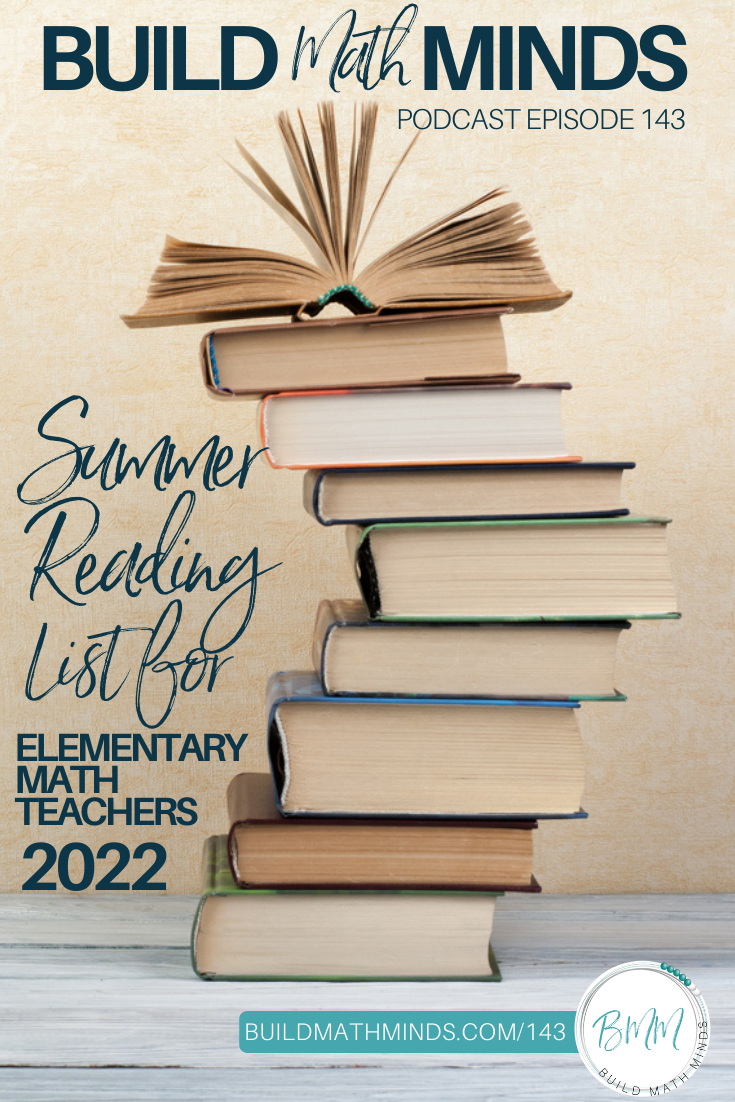Resources mentioned in this episode:
Build Math Minds Idea Lists on Amazon
The Flexibility Formula courses
Welcome fellow Recovering Traditionalists to Episode 143. Today I’m giving you a Summer Reading List for Elementary Math Teachers 2022.
Last year in episode #97, I shared my top suggestions of Elementary Math Books for Your Summer 2021 Reading. I was going to do that again this year, but instead of me just giving you a few suggestions I am doing something different.
Each of you listening to this podcast have different goals for your professional development. You have different things you are wanting to read about to help your students next year have an even better math experience in your classroom.
So I’ve compiled a bunch of different lists on Amazon so you can choose from books for specific areas you want to focus on.
I’ve organized the lists with the pillars of The Flexibility Formula in mind. The Flexibility Formula is an online PD course I have, but it’s also a framework we can use to help us build math minds and not just create calculators.
There are 5 pillars to The Flexibility Formula: Equity & Access, Understanding, Observing, Connecting, and Experiencing.
So in my Amazon Idea Lists, you will find an Equity & Access list, Observing Student Thinking list, multiple Experiencing Math lists, and multiple lists around Understanding. I created different UNDERSTANDING lists for the main math concepts we are working to help kids understand. If you are wanting to check out books to help you better understand how to help your students with Fractions, there’s a list for that. Want help with Number Sense & Place Value, there’s a list for that. Go check out the page for all the lists I created. Just go to buildmathminds.com/recommends it will take you to my Amazon lists.
I also have multiple lists for Experiencing Math. There is one with my favorite books about different types of math experiences, one for my favorite math manipulatives, one with math-y games and toys, and one with math-y children’s books. All of those are ways we can help kids experience mathematics.
All the pillars of The Flexibility Formula are represented in my Amazon lists, except for CONNECTING, because there aren’t many resources out there that talk about the connections within math concepts. Hopefully that will get added soon. But for those of you who are members of the Build Math Minds PD site, we do have videos about that for you inside your BMM Membership area.
If you are looking for books and resources to help your students build their math minds, then go check out my recommendations at buildmathminds.com/recommends. On that page, you can even follow me on Amazon so that if I add new books or resources you will be notified. I’ll also link the page up on the show notes page buildmathminds.com/143
Until next week my Fellow Recovering Traditionalists, keep Building Math Minds…including your own.
If your school is looking for math professional development, consider enrolling in the Build Math Minds PD site. It’s an online site full of PD videos designed specifically for elementary teachers to help you build your math mind so you can build the math minds of your students. If you are interested in getting in-depth Math PD at Your Fingertips, become a member of Build Math Minds. Just go to buildmathminds.com/bmm to get professional development that you can do anytime and anywhere.





It isn’t a book, but my students are LOVING the Clumsy Thief game collection (Clumsy Thief, Clumsy Thief Jr, Clumsy Thief in the Candy Shop, and Check the Fridge)
My latest favorite has been Peter Liljedahl’s book, Building Thinking Classrooms in Mathematics K-12: 14 Teaching Practices to Enhance Learning
Thanks for the other ideas!
Math Fact Fluency by Jennifer Bay-Williams and Gina Kling . 60+ Games and Assessment Tools to Support Learning and Retention It’s amazing!
Constance Kamii — Young Children Reinvent Arithmetic.
This book was given to me by a master teacher of 35 years. It started me on my journey of discovery and led me to your website, which added so much to my understanding and resources. She did intensive research into how kids learn math, has tons of ideas and games, and I love her emphasis on Piaget’s theory of autonomy – so needed in today’s classrooms.
It’s all about understanding – she has proof that the algorithms destroy logic by studying three classrooms who taught three different ways. It’s remarkable. Also Young Children Continue to Reinvent Arithmetic. Lots of ideas and games included.